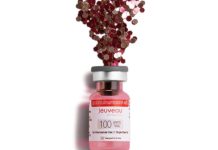Dermal fillers may be a potential option to treat acne scars due to the injectables’ ability to effectively add volume to depressed or indented acne scars by elevating them to the level of the surrounding skin, improving its appearance and smoothing the skin’s surface, according to Michelle Henry, MD, FAAD, who detailed the treatment benefits in an article from Popsugar.
Dr. Henry explained that acne can leave a scar if the skin beneath the acne spot becomes inflamed or wounded, causing pigmentation from uneven collagen deposition on the damaged area. The scars can manifest as discolored patches, raised or depressed areas or pitted holes on the skin, ranging in severity from mild to severe, and different types of acne scars exist, including ice pick, rolling and boxcar scars, which have various shapes and sizes. Henry told Popsugar that a good indication that a pimple or blackhead could leave an acne scar is if it has been in one area for an extended period of time or is extremely inflamed.
Filler injections can help treat the scars by adding volume and smoothing out the skin’s surface. The type of filler used can depend on the scar’s location and severity, skin type and the desired outcome, according to Henry. The time it takes to achieve results and how long the filler lasts can also vary based on the patient’s lifestyle and type of scarring.
Like other typical uses of dermal fillers, there are minimal side effects to treating acne scars with filler injections, including temporary swelling, redness, sensitivity or discoloration at injection sites.
Since acne scarring is an elective, cosmetic procedure, it is not covered by insurance and can cost anywhere from $600 to $1,200.






